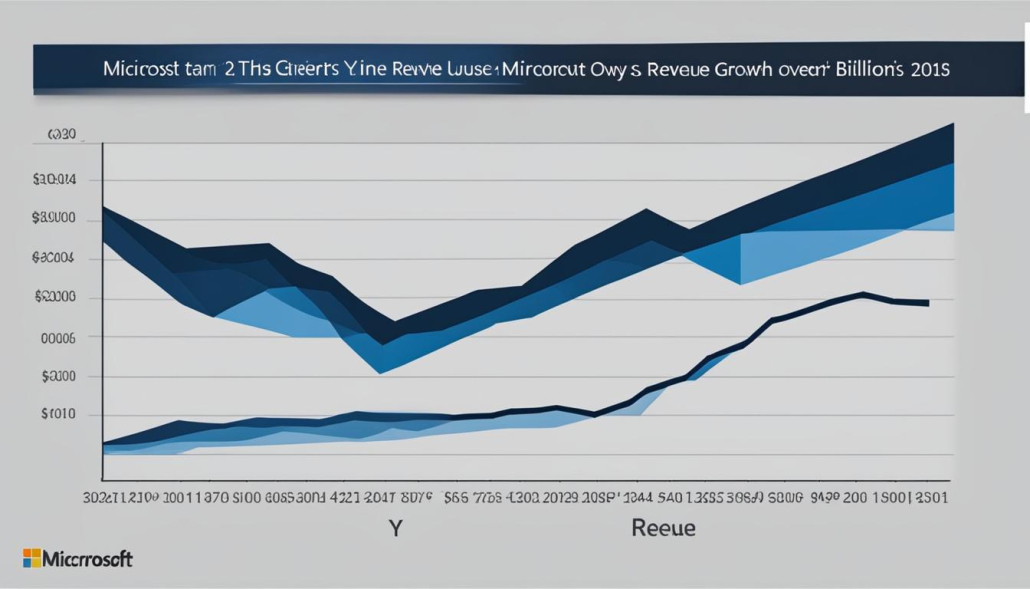Understanding What Is Revenue in Business
If you ever find yourself wondering about the thrills and challenges of the corporate world, one term that frequently pops up is “revenue.” But what is revenue, exactly? Let’s dive into the heart of any business’s financial success and unpack the core concept behind this crucial term. In my experience, grasping the revenue definition is critical for anyone looking to understand how a company measures its achievements and continuously strives for growth. Revenue, often considered the lifeblood of a firm, represents the total income generated from selling goods or providing services — essentially, the pulse check on a company’s operations.
For me, tracking revenue offers a window into a business’s capacity to effectively reach and maintain its customer base. It stands at the forefront of an income statement, shining light on whether a company’s sales and marketing efforts are hitting their mark. Before plunging into expenses or profit calculations, it’s revenue that we first scrutinize — and with good reason, for it lays the groundwork for a venture’s business financial success.
Key Takeaways
- Revenue is the total income generated from the sale of goods or services.
- Understanding revenue is essential for gauging business performance.
- Revenue appears at the top of an income statement and is a precursor to profit.
- The ability to drive revenue reflects a firm’s market efficacy and demand fulfillment.
- A firm grasp on revenue helps stakeholders make informed financial decisions.
Exploring the Revenue Meaning in Business Context
When delving into the essentials of business finance, the term ‘revenue’ often takes center stage. But what does this term truly mean and why does it hold so much significance? I’ll take you through the intricacies to uncover the fundamental concepts and practices that form our understanding of revenue in today’s businesses.
The Basic Definition of Revenue
In my experience, grasping the revenue definition is the first step towards decoding the financial narratives of any establishment. Put simply, revenue embodies the total cash inflow from a company’s primary operations before any expenditures are subtracted. It’s the gross income derived from the sale of goods or provision of services—the pulsating heart of any commercial venture.
Revenue: The Starting Point of Financial Health
Aligning with the revenue meaning, I’ve seen it act as a prime indicator of a business’s vitality. It acts as a preliminary gauge of a company’s market performance and the prowess of its products or services to stir up demand, laying down the foundation for evaluating financial health and stability.
How Businesses Recognize Revenue
Revenue recognition practices vary, with accounting methods like accrual and cash dictating when a company records its sales. The stringent criteria set forth by the ASC 606 regulation prescribe a five-step process for recognizing revenue that necessitates identifying contractual obligations and performance benchmarks. As a company fulfills these duties, the revenue is formally recorded. This systematic process ensures transparency and precision in revenue generation reporting, pivotal for investor confidence.
In public sector and non-profit realms, revenue streams from taxes, grants, or donations follow diverse recognition protocols, each tailored to the nature of the inflow. It’s a nuanced landscape, where every dollar recorded underscores a different facet of operational success.
| Accounting Method | Revenue Recognition | Common in Industries |
|---|---|---|
| Accrual Accounting | Recognize when earned, regardless of payment receipt | Services, Long-term contracts |
| Cash Accounting | Recognize upon actual payment receipt | Retail, Small businesses |
| ASC 606 Compliance | Five-step process aligning with contract fulfilment | Corporations, Large enterprises |
Revenue Calculation Essentials
As an experienced finance analyst, I consider understanding the nuances of revenue calculation to be paramount in evaluating a business’s gross earnings. It’s the pulse that underpins every financial statement, dictating the affluence and potential of a business’s operations.
Breaking Down the Revenue Calculation Formula
At its core, the formula to determine net revenue seems straightforward—multiply the quantity of products or services sold by the unit price. Yet, this raw figure undergoes adjustments for returns, allowances, and discounts, providing a more accurate picture of actual earnings. Let me delineate a simple example:
Net Revenue = (Quantity Sold x Unit Price) – (Discounts + Returns + Allowances)
It’s a stepping stone for thorough revenue examples analysis, but mere calculation isn’t enough. Understanding the context in which this number fits is the key to unlocking real insights.
Variations in Revenue Calculations Across Industries
Different industries entail distinct revenue types and calculation methods. For instance, a SaaS company might factor in monthly recurring revenue, whereas a retailer emphasizes point-of-sale transactions. Integrating the diversity in revenue sources and methods is crucial for an all-encompassing fiscal analysis.
Take note of the variations in industries through this concise table:
| Industry | Revenue Type | Calculation Method |
|---|---|---|
| Technology | Subscription Revenue | Monthly Subscribers x Fee per Subscriber |
| Retail | Sales Revenue | Daily Transactions x Average Sale Price |
| Manufacturing | Product Revenue | Units Produced x Sale Price per Unit |
| Services | Service Revenue | Hours of Service x Hourly Rate |
An experienced accountant is invaluable in navigating these nuances to ensure a precise and tailored revenue calculation, framing a business’s financial narrative efficiently and effectively.
In conclusion, while the basic principles of revenue calculation may seem uniform, the real mastery lies in adeptly applying these principles to the unique landscape of each business and industry—beholden to their distinct revenue streams and financial intricacies.
Distinguishing Between Revenue Types
As I delve into the financial intricacies of a business, understanding the difference between revenue types is key to a comprehensive analysis of a company’s financial health. Operating revenue and non-operating revenue hold unique characteristics that can offer insights into a company’s performance and strategic direction.
Operating vs. Non-Operating Revenue
Operating revenue is the lifeblood of any company, representing the funds generated from its core business activities. For example, when we look at a retailer like Walmart, the sales from groceries, electronics, and apparel contribute to its operating revenue. This figure is crucial because it indicates the efficiency and success of the company’s primary business.
On the other hand, non-operating revenue arises from secondary activities that fall outside the normal business scope. This can include earnings from investments, gains from asset sales, or even legal settlements. These sources tend to be less predictable and can vary significantly from one period to another, but they provide additional financial cushioning and can have a notable impact on the company’s bottom line.
Segmentation of Revenue in Diverse Companies
Companies like Apple demonstrate the importance of segmenting revenue, drawing clear lines between their various income streams. Take their hardware offerings, such as the iPhone and MacBook, versus their subscription services like Apple Music. Each segment is monitored for performance, informing strategic decisions and helping Apple respond to market demands effectively.
Differentiating between these types of revenue offers valuable context for understanding a company’s earnings reports. Let’s take a closer look at how companies like Apple categorize their diverse revenue streams:
| Revenue Segment | Description | 2020 Revenue (in billion USD) |
|---|---|---|
| iPhone | Sales of all iPhone models | 137.8 |
| Services | Apple Music, iCloud, Apple Pay | 53.8 |
| Wearables, Home and Accessories | Apple Watch, AirPods, HomePod | 30.6 |
| iPad | Sales of all iPad models | 23.7 |
| Mac | Sales of MacBook, iMac, Mac Pro | 28.6 |
Creating detailed revenue categories not only enhances transparency for stakeholders but also provides a granular view of where a company is generating most of its cash flow—a vital component for informed investment and operational decisions.
As we continue to explore the financial mechanisms within a business, distinguishing between revenue types such as operating revenue and non-operating revenue becomes a foundational aspect. It informs us not just about a company’s current earnings but also shines a light on potential areas for growth. By examining these revenue streams, financial analysts and investors can better assess the stability and future prospects of a company.
What Is Revenue: A Deep Dive into Sales and Services
In my exploration of financial metrics, revenue stands out as a clear indicator of a company’s market success. It represents the lifeline that fuels all business activities and paves the way for profitability and future growth. To unravel the essence of revenue, we must consider real-world revenue examples, understand the engines of revenue generation, and appreciate the strategies that drive revenue growth.
Let’s look at Microsoft, a titan in the tech industry, operating across various business segments. Each division, whether it be Productivity and Business Processes, Intelligent Cloud, or More Personal Computing, serves as a unique revenue channel. Through diligent analysis of these segments, insights into the company’s financial narrative unfold, revealing growth trends and areas ripe for strategic enhancement.
I’ve crafted a table that exemplifies the revenue streams of prominent companies like Microsoft, underscoring the diversity and potential within revenue channels. This visual aid simplifies complex financial data, allowing us to digest and analyze the avenues through which companies like Microsoft maintain their industry dominance and financial health.
| Business Segment | Revenue Contribution | Year-Over-Year Growth | Strategic Focus |
|---|---|---|---|
| Productivity and Business Processes | $41.16 Billion | 15% | Cloud-based services expansion |
| Intelligent Cloud | $48.37 Billion | 24% | AI and server products development |
| More Personal Computing | $45.70 Billion | 8% | Windows OS and gaming enhancements |
This detailed breakdown not only provides a snapshot of Microsoft’s financial standing but also illustrates a broader principle: the diversification of revenue streams is a dynamic approach to bolstering revenue health and resilience against market fluctuations.
In sum, revenue shapes the narrative of a company’s success. It isn’t merely about the figures that appear in quarterly reports; it’s about the compelling story they tell of a business that understands its market, adapts to consumer needs, and consistently innovates to ensure sustainable growth.
Revenue and Profit: Understanding the Relationship
When I explore the financial landscape of businesses, I often emphasize the essential connection between revenue and profit. Although intertwined, these two financial terms convey very distinct meanings and implications for a company’s success. Let’s delve into the distinguishing features of revenue vs income and unveil profit conversion strategies that can foster financial health and growth.
The Difference Between Revenue and Net Income
Revenue, often referred to as the top line, is the total income earned from a company’s primary business activities, such as sales of products or services, before any costs or expenses are deducted. It’s the starting figure on an income statement and a raw indicator of sales efficiency. On the other hand, net income, or profit, is also known as the bottom line. It’s the definitive number that tells us what remains after all operating expenses, overheads, taxes, interest, and costs of goods sold have been subtracted from total revenue. This figure is pivotal as it represents a company’s ability to convert sales into actual earnings.
Strategies for Converting Revenue to Profit
To transform revenue into profit, companies often employ various profit conversion strategies, necessitating both revenue enhancement and cost management. Let’s look at some key tactics:
- Increase Pricing: If the market allows, adjusting the price point of products or services can instantly expand profit margins.
- Cost Reduction: Cutting operational and production costs can directly bolster net income without increasing sales.
- Enhancing Efficiency: Streamlining processes and optimizing resource utilization leads to lower expenses and better profit ratios.
- Diversification: Introducing new products or services can tap into additional market segments, amplifying revenue potential.
- Market Penetration: Increase market share within existing markets to capitalize on economies of scale, reducing costs and increasing profit margins.
These profit conversion strategies are a testament to a company’s agility in navigating the demanding intersection of revenue generation and expense management. Strong financial acumen and strategic planning are key to maximizing profitability and shareholder value.
Revenue Examples in Different Sectors
When dissecting revenue streams across sectors, it is intriguing to see how varied and unique each industry can be. In my examination, I’ve observed the stark differences between technology behemoths like Microsoft and the nuanced financial makeup of non-profit organizations. Let us delve deeper into the distinct ways these sectors handle revenue generation and recognition.
Revenue Streams in Technology Giants Like Microsoft
The technology sector typically showcases a kaleidoscope of revenue streams due to a broad array of products and services. Microsoft, an industry leader, demonstrates this diversity by splitting its revenue into significant segments, reflecting a robust purview of its business model. What’s fascinating about technology sector revenue is the blend of tangible goods, like laptops and gaming consoles, alongside intangible offerings, such as cloud services and software licenses, each contributing substantial figures to the overall financial picture.
How Revenue Functions in Non-profit Organizations
In contrast to the for-profit sector, non-profit organizations rely on a fundamentally different revenue structure. Their focus is not on the sale of goods or services but on the accumulation of funds through donations, grants, and fundraising events. The non-profit revenue narrative is about maximizing gross receipts to sustain the entity’s mission and activities. Let’s visually compare these sectors using a detailed table.
| Criteria | Technology Sector | Non-Profit Sector |
|---|---|---|
| Main Revenue Sources | Product Sales, Service Subscriptions, Licensing Fees | Donations, Grants, Fundraising |
| Example Entity | Microsoft | The American Red Cross |
| Financial Focus | Profit Generation | Mission Support |
| Revenue Recognition | Based on Product/Service Delivery | When Funds are Raised |
I find it quite profound how each sector leverages its unique strengths to generate revenue. Whether it’s through innovative technology products or altruistic endeavors, both demonstrate the multifaceted nature of revenue and its importance in sustaining operation and growth.
Revenue vs Income: Clarity on the Two Terms
When I delve into the realm of corporate finance, a recurring question arises among newcomers: what is the difference between revenue vs income? In simple terms, revenue is often referred to as the ‘top line’, signifying the total gross sales achieved by a company before any deductions are made. This figure is critical as it mirrors the company’s ability to generate sales and indicates the initial success of its products or services in the market.
On the other side of the coin is net income, sometimes just called income, which represents the ‘bottom line’. Net income is calculated after all operating expenses, salaries, taxes, and other necessary expenditures have been subtracted from the revenue. This is the actual earnings that a company retains, showcasing its efficiency and ability to manage its resources effectively to secure growth and stability.
Both revenue and net income are cornerstones in the financial assessments of a company and serve distinct functions:
- Revenue is the benchmark for market performance and sales success.
- Net income provides insight into how well the company utilizes its revenue to cover expenses and generate profit.
Analysts and investors meticulously evaluate these figures to gauge the overall fiscal health and viability of organizations. Deciphering and understanding these metrics is akin to having a financial compass, guiding stakeholders toward informed business decisions and strategies that align with the company’s growth objectives.
| Financial Metric | Definition | Importance |
|---|---|---|
| Revenue (Gross Sales) | Total income from sales before deductions | Measures sales effectiveness and market demand |
| Net Income | Remaining income after all expenses | Indicates profitability and operational efficiency |
Effective and judicious management of both revenue and net income is essential for any discerning enterprise that aims to not only survive but thrive in today’s competitive markets. As a copywriting journalist, my mission is to illuminate these critical financial concepts, helping my audience to decode the language of business and emerge fiscally literate and empowered.
Revenue Generation Tactics and Growth
My continuous exploration of financial dynamics has uncovered that the backbone of any flourishing business lies in effective revenue generation tactics. Not only do these strategies pave the way for immediate revenue growth, but they also lay the groundwork for sustainable business growth. Let’s delve into how innovative product launches and efficiency in revenue management contribute to a thriving bottom line.
Enhancing Revenue Through New Product Launches
One cannot speak of revenue enhancement without highlighting the impact new product launches have on market dynamics. When a company like Apple releases a new iteration of the iPhone, it’s not just a product—it’s an event. This phenomenon catapults their revenue, setting industry benchmarks. The anticipation and well-orchestrated marketing campaigns around these launches exemplify how targeted product introductions can escalate sales and widen consumer bases.
Efficient Revenue Management for Sustainable Growth
Beyond initial sales spikes, the prowess of efficient revenue management cannot be underestimated. To achieve long-term viability, businesses must balance production with demand, strategically price offerings, and maintain inventory that aligns with consumption rates. The following table compares two renowned companies and their tactics for efficient revenue management.
| Company | Product Strategy | Pricing Approach | Inventory Management |
|---|---|---|---|
| Apple | Periodic high-demand launches | Premium pricing for new technology | Lean inventory, high turnover rate |
| Samsung | Diverse offerings for multiple segments | Competitive pricing with tiered options | Responsive supply chain management |
As illustrated above, both Apple and Samsung deploy distinct yet effective approaches. Apple’s product launches often lead to a streamlined, albeit tight, inventory control that matches their supply with consumer frenzy. Samsung, on the other hand, takes advantage of its broad consumer base by diversifying and pricing its products strategically. Together, they showcase pathways to profitability, each according to their market positioning and operational philosophy. I invite companies to look to these exemplars for inspiration when developing their own revenue generation tactics to bolster their financial success.
Revenue in the Real World: Case Studies
When we discuss revenue outside of theory and within the bustling world of commerce, nothing is more enlightening than real-world examples and the dissection of actual financial reports. Looking at the giants, like Apple, can teach us volumes about the strategies and innovations that lead to their impressive revenue figures. Simultaneously, observing the struggles and triumphs of small businesses and startups provides us with grassroots insights into the role of revenue in budding ventures.
Insight from Apple’s Revenue and Income Reports
One of the most compelling case studies involves Apple, a company that continues to defy expectations with its revenue growth. With a business model that hinges on constant innovation and market expansion, Apple’s financial reports are a rich source for understanding how product development and strategic market positioning translate to higher revenues—and ultimately, robust income figures. An analysis of Apple’s quarterly earnings offers a breakdown of how various product sectors contribute to total revenue, showing a clear correlation between the introduction of new technology and an uptick in sales.
The Role of Revenue in Small Businesses and Startups
While small businesses and startups do not operate on the same scale as Apple, their reliance on revenue is no less important. For these entities, revenue is a vital indicator of market validation and demand. Without the extensive capital resources or diverse revenue streams of larger corporations, effective revenue generation can mean the difference between survival and failure for smaller ventures. Carefully calibrated business models that emphasize customer needs and market gaps are critical for ensuring steady revenue flow in the highly competitive small business ecosystem.
| Year | Apple’s Revenue (in billions) | Small Business Average Revenue Growth |
|---|---|---|
| 2018 | 265.6 | 4.3% |
| 2019 | 260.2 | 4.7% |
| 2020 | 274.5 | 3.5% (COVID-19 Impact) |
| 2021 | 365.8 | 5.1% |
In my analysis, these case studies highlight not only the importance of maintaining and growing revenue but also how businesses of all sizes must stay nimble and progressive to harness opportunities for revenue maximization. As the table shows, while Apple’s revenue reflects the result of broad-scale operations, small businesses too have showcased growth, imbuing the notion that careful strategy can yield positive trends, regardless of size.
Conclusion
Throughout this discourse on revenue, I’ve delved deep into its critical essence, underpinning business financial success. The journey has been an illuminating path, offering clarity on why revenue is not merely a number on a balance sheet but the lifeblood of market operations, painting a vivid picture of business dynamics. Taking the essential tour from basic calculation to sophisticated revenue management, it’s become apparent that assessing revenue importance is tantamount to assessing the very heart of a business’s vitality and its capacity to not just survive but thrive.
Summarizing Revenue’s Role in Assessing Business Success
My exploration underscores the indispensable role of revenue as a measure for sales performance and market demand. Through meticulous calculation, segmentation, and analysis, businesses illuminate their strategic standings, enabling them to harness opportunities for growth. Revenue, as I have underscored, speaks louder than words—it is a narrative of achievements, ambitions, and potential. For anyone involved in commerce, this narrative is the guidepost by which success is mapped, charted, and pursued.
Key Takeaways on Revenue’s Importance in Business Operations
In conclusion, let me highlight the key takeaways: understanding the nuances of revenue is central to overseeing a successful business operation. It’s not just about recognizing the number; it’s about comprehending what that number signifies in terms of customer engagement, efficiency of service, and product desirability. Whether you’re a fledgling startup, a nonprofit, or a global corporation like Microsoft or Apple, the symbiosis between revenue and sustainable growth remains constant. Indeed, savvy stakeholders are always tuned in to the revenue frequency, for it is there that the future harmony and prosperity of a business plays its tune.
FAQ
What is revenue in the context of business?
Revenue in a business context refers to the total amount of money generated from the sale of goods and services before any expenses are deducted. It represents the income that a business earns from its normal business activities, such as sales or service delivery.
How do businesses recognize revenue?
Businesses recognize revenue based on accounting principles, which can vary. Under accrual accounting, revenue is recognized when it is earned, often when goods or services are delivered—not necessarily when payment is received. Cash accounting, however, recognizes revenue when payment is received. The new ASC 606 provides a more detailed five-step model for revenue recognition in line with contemporary business practices.
What formula is used for revenue calculation?
The basic formula for revenue calculation is typically the total number of units sold multiplied by the average sales price per unit. Adjustments are made for discounts, allowances, and returns to arrive at the net revenue figure.
What are the different types of revenue?
There are mainly two types of revenue: operating revenue, generated from a company’s core business activities, and non-operating revenue, which comes from non-primary business activities such as investments or asset sales. Within these categories, a company can further segment revenue by product lines, divisions, or geographic regions to analyze performance.
How are revenue and profit related?
Revenue is the income generated from a company’s core business operations, and it is the starting point for earning profit. Profit, or net income, is what remains after all business expenses have been subtracted from the revenue. It reflects the overall financial efficiency of the company after costs, taxes, and other expenses are accounted for.
How do revenue streams differ in non-profit organizations compared to for-profit businesses?
Non-profit organizations mainly rely on revenue streams like donations, grants, and memberships, which are different from the product or service sales that for-profit businesses depend on. For non-profits, the focus is on funding their activities and missions rather than generating profit.
What is the difference between revenue and income?
Revenue is the total amount of income generated from the sale of goods and services and is often called the ‘top line’. Income, or net income, is known as the ‘bottom line’ and is calculated by subtracting all expenses, taxes, and other costs from the revenue. Income reflects the profitability of a company after all financial obligations have been satisfied.
What strategies can companies use to enhance revenue growth?
Companies can stimulate revenue growth through various strategies such as launching new products or services, improving sales techniques, optimizing operations for efficiency, and pricing strategies that maximize income while remaining competitive in the market.
How does revenue impact small businesses and startups differently compared to large companies?
For small businesses and startups, revenue is an essential indicator of market acceptance and potential for growth. It’s often a vital sign of viability for investors and stakeholders, and achieving consistent revenue can be a key challenge to overcome for long-term success. Large companies, such as Apple, have more complex revenue streams but also heavily rely on revenue performance to assess their market position and guide strategy.
- About the Author
- Latest Posts
Cathy Berger is a member of the editorial staff at docurex.com










